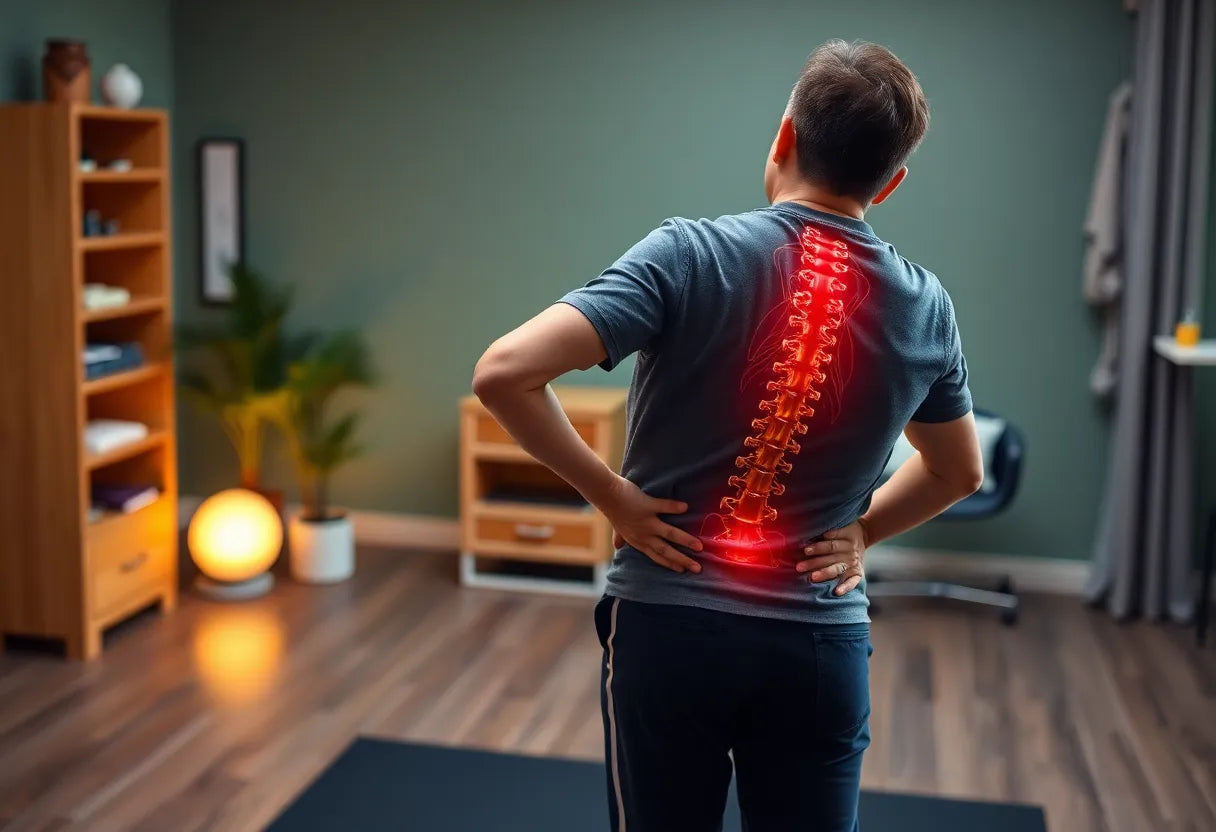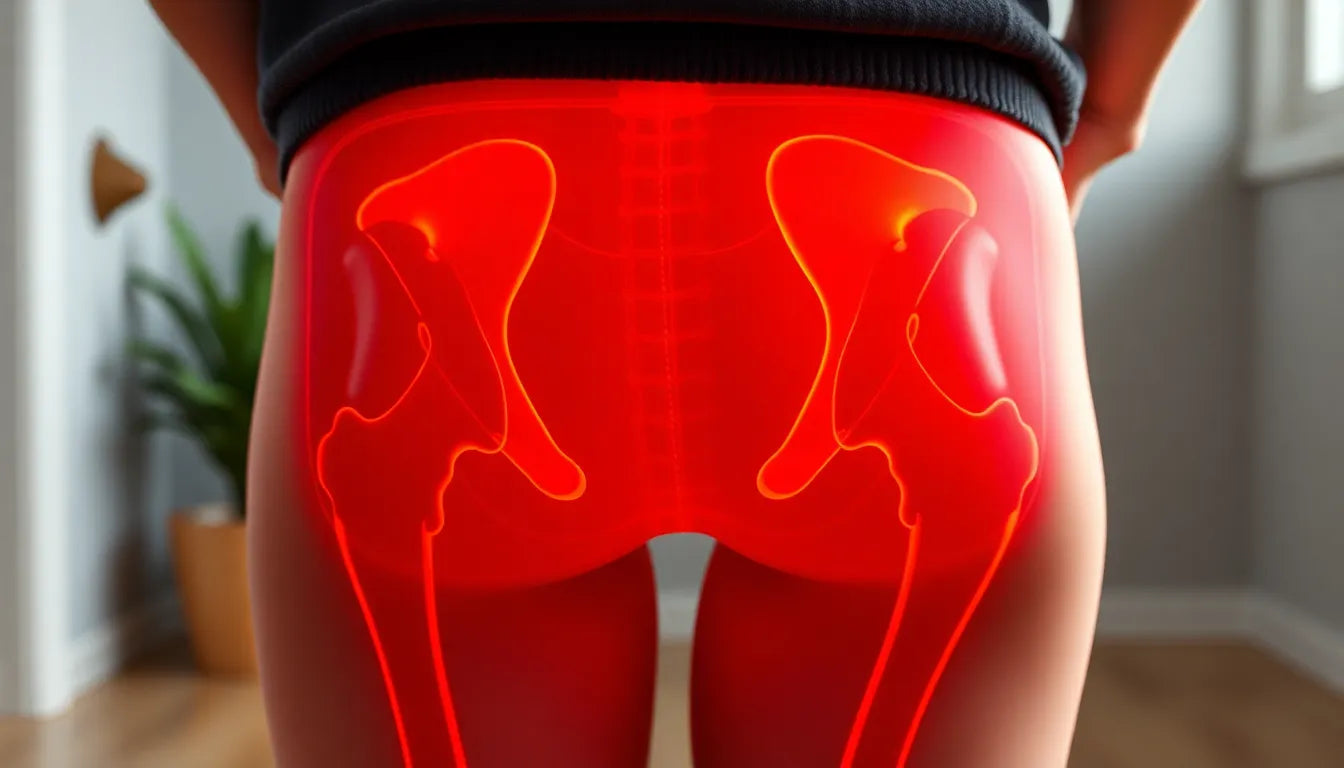Understanding the complexities of a herniated disc is essential for anyone experiencing back pain or discomfort. A herniated disc occurs when the soft, gel-like center of a spinal disc pushes through a crack in the tougher outer layer. This condition can lead to a range of symptoms, including pain, numbness, or weakness in an arm or leg, depending on the disc's location in the spine. These symptoms can significantly impact daily life, making effective management crucial.
understanding herniated discs and their symptoms
Herniated discs are a common spinal issue, often resulting from wear and tear or sudden injury. The spine's discs act as cushions between the vertebrae, absorbing shocks and enabling flexibility. When a disc herniates, it can press on nearby nerves, leading to discomfort and mobility issues. Common symptoms include sharp or radiating pain, tingling sensations, and muscle weakness. These symptoms typically manifest in the areas served by the affected nerves, such as the arms, legs, or lower back.
Physiotherapy plays a vital role in managing herniated discs, offering a non-invasive approach to pain relief and recovery. By strengthening and stabilizing the spine, physiotherapy can help alleviate symptoms, improve function, and prevent further injury. It focuses on targeted exercises designed to enhance core strength, flexibility, and overall spinal health.
the role of exercise in herniated disc recovery
Exercise is a cornerstone of recovery from a herniated disc. Gentle, consistent physical activity can significantly contribute to healing and maintaining spinal health. The primary goals of these exercises are to reduce pressure on the nerves, enhance flexibility, and strengthen the core muscles that support the spine. By doing so, exercises can help alleviate pain and improve mobility.
It's important to approach these exercises with consistency and patience. Recovery from a herniated disc is not instantaneous; it requires a dedicated effort over time. Gentle exercises, performed regularly, can lead to gradual improvements in pain levels and overall function. It's crucial to avoid high-impact or painful movements, as these can exacerbate symptoms and hinder recovery.
Incorporating physiotherapy exercises into your routine can be a transformative step toward managing a herniated disc. By focusing on gentle, targeted movements, you can work toward reducing discomfort and enhancing your quality of life. Remember, patience and consistency are key, and seeking professional guidance can further optimize your recovery journey.

Lumbar support belt
Støtter og stabiliserer lænden og aflaster smerter, særligt ved diskusprolaps og rygproblemer.
effective exercises for herniated disc relief
Incorporating specific exercises into your routine can significantly aid in the recovery process for a herniated disc. These exercises are designed to be gentle yet effective, focusing on reducing pressure on affected nerves and enhancing spinal flexibility and strength. Here are some key exercises that are commonly recommended:
standing lumbar extension
The standing lumbar extension exercise is a straightforward movement that can help alleviate pressure on the spinal discs. To perform this exercise, stand with your feet shoulder-width apart and place your hands on your hips. Gently lean backward, keeping your knees straight but not locked. This movement encourages the disc material to move away from the nerve roots, potentially reducing pain and discomfort.
knee-to-chest stretch
The knee-to-chest stretch is another effective exercise for those dealing with a herniated disc. Lie flat on your back with your knees bent. Slowly bring one knee toward your chest, holding it with your hands for a gentle stretch. Hold this position for a few seconds before switching to the other leg. This exercise helps stretch the lower back muscles, reducing tension and promoting flexibility.
piriformis stretch
The piriformis stretch targets the piriformis muscle, which can sometimes irritate the sciatic nerve and exacerbate pain. To perform this stretch, sit on the floor with one leg crossed over the other. Gently twist your torso toward the crossed leg, feeling a stretch in the buttock area. This exercise can help alleviate sciatic nerve pain by loosening tight muscles.
partial crunches
Partial crunches are a safe way to strengthen the core muscles without putting undue strain on the spine. Lie on your back with your knees bent and feet flat on the floor. Cross your arms over your chest and lift your shoulders off the ground, engaging your abdominal muscles. Hold for a few seconds before lowering back down. Strengthening the core can provide better support for the spine, aiding in recovery and preventing future injuries.

Men's Posture Shirt™ - Black
Stimulerer muskler, aflaster ryggen og støtter en sundere holdning dagligt.
safety guidelines and professional advice
When engaging in exercises for a herniated disc, safety should be a top priority. Always begin with a proper warm-up to prepare your muscles and joints for activity. Avoid high-impact or painful movements, as these can worsen symptoms. Gradual progression is key—start with basic exercises and slowly increase intensity and duration as tolerated.
It's crucial to listen to your body and avoid pushing through pain. If you experience persistent pain or are unsure about the correct form, seeking professional guidance from a physiotherapist can be invaluable. They can provide personalized advice and modifications to ensure exercises are performed safely and effectively.
In conclusion, incorporating these targeted exercises into your routine can play a significant role in managing herniated disc symptoms and promoting recovery. Remember, consistency and patience are essential, and professional guidance can further enhance your rehabilitation journey. By following these guidelines, you can work towards reducing discomfort and improving your quality of life.
recovery and long-term management for herniated discs
Recovering from a herniated disc requires a realistic understanding of timelines and a commitment to long-term management strategies. Initial improvements in symptoms can often be seen within a few weeks of starting a consistent exercise routine, but full recovery may take several months. This process underscores the importance of adhering to a regular schedule of physiotherapy exercises, which can help alleviate pain and restore function.
Preventive measures play a crucial role in managing and preventing future herniated discs. Ergonomics, for instance, involves adjusting your workplace setup to support spinal health. This can include using an ergonomic chair, ensuring your computer screen is at eye level, and taking regular breaks to move around. Additionally, daily habits such as maintaining good posture, avoiding prolonged sitting or standing, and incorporating regular movement into your routine can significantly reduce the risk of disc issues.
By focusing on these strategies, individuals can not only recover more effectively from a herniated disc but also prevent future occurrences. Consistency in exercise and attention to ergonomic practices are key components of a comprehensive approach to spinal health.
frequently asked questions
Can I perform these exercises at home without equipment?
Yes, most of the recommended exercises for a herniated disc can be done at home without any special equipment. The key is to ensure you are following proper form and technique to avoid injury.
How often should I do these exercises?
It is advisable to engage in gentle, frequent exercise sessions, ideally 3–5 times per week. This frequency helps to maintain flexibility and strength without overloading the spine.
What should I do if I experience pain during exercises?
If you experience pain during exercises, it is important to stop immediately and consult a healthcare professional. Pain might indicate that the exercise is not suitable for you or that it is being performed incorrectly.
Can these exercises prevent future herniated discs?
While these exercises can strengthen the spine and help reduce the risk of future injuries, the best prevention strategy combines exercises with lifestyle changes and ergonomic adjustments to support overall spinal health.
Is surgery necessary for a herniated disc?
Surgery is often considered a last resort for treating a herniated disc. Many individuals find relief through conservative treatments such as physiotherapy and lifestyle modifications. It is always best to consult with a healthcare provider for advice tailored to your specific condition.
Kilder
- Goodpath. "Exercises for a Herniated Disc."
- Orthopedic NJ. "Herniated Disc Exercises and Stretches."
- Medical News Today. "What to know about herniated discs."
- Mass General Brigham. "Understanding Herniated Disc Pain."
- YouTube. "Herniated Disc Exercises & Stretches."
- PTCOA. "Exercises and Stretches for Herniated Disc Relief."
- Kaiser Permanente. "Herniated Disc Exercises."























